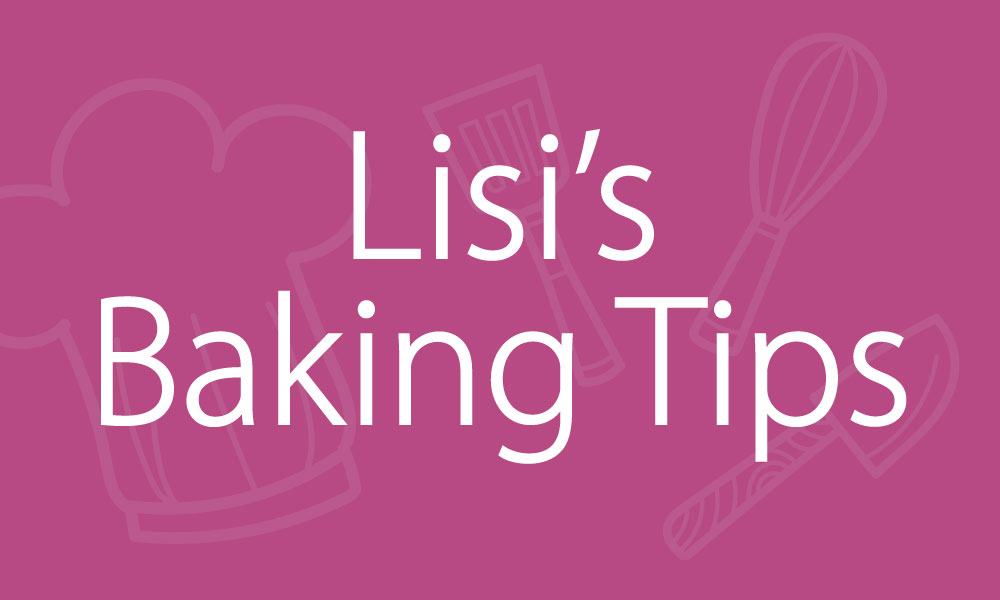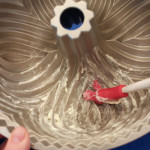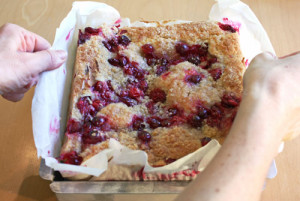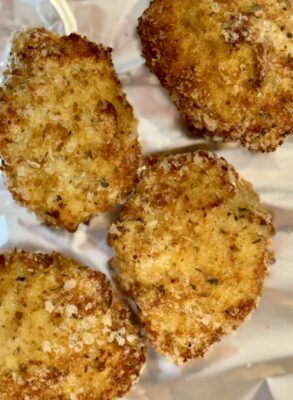
PAN PREP:
It is really important to grease and flour your bundt pans. For a bundt pan with many crevices, I soften the butter and almost melt it – then with a pastry brush I get in to all the nooks  and crannies. I love the Anniversary bundt pan from Williams-Sonoma and it rarely sticks. And I also love the pans from Nordicware – there are so many beautiful pans and cakes come out evenly browned.
and crannies. I love the Anniversary bundt pan from Williams-Sonoma and it rarely sticks. And I also love the pans from Nordicware – there are so many beautiful pans and cakes come out evenly browned.
For loaf pans and sheet pans, I like to use a soft butter – not melted – and hold a chunk of butter with a paper towel and rub all around. Then lightly coat with flour – tapping out excess. Your cakes should then pop out easily. You can also use a cooking spray, but I like butter best. When using round or square baking pans, or loaf pans – your best bet is to take the extra step and line the bottom of the pan with parchment paper. Butter the bottom first, line with parchment, then butter and flour as instructed above. If you have too much batter for your bundt pan, just make a small test cake on the side with the extra batter. Do not try to stuff all the cake into a too small pan.
If you want, instead of lining a square pan with butter and parchment on the bottom, you can line it with parchment or foil so that it comes all the way up the sides of the baking pan. (To line the pan with foil, simply turn the pan upside down and form the shape with the foil. Then turn pan over and place the already shaped foil inside the pan.) If you are making brownies, blondies or a sticky something, you can then simple pull the baked good from the pan, using the parchment/foil to aid you – as shown below…


PARCHMENT:
Use parchment paper over and over and over again. I like to get half sheets of parchment that fit nicely over my half sheet pans. Makes it verrry easy. You can buy parchment like this at The Bakers Catalogue.



